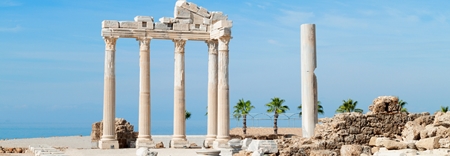ABOUT ANTALYA
Antalya
The paradise on earth, the pearl city of the Mediterranean, and the Turkish Riviera
With its history, natural beauty and a rich variety of local life style, the city hosts more than 11 million foreign guests, from all over the world on a yearly basis. Antalya is one of the world’s foremost tourism destinations, offers you a peerless experience.
As a typical Mediterranean city combining ancient cities whispering tales of history, myth and legend, emerald green forests and the sparkling waters of the Mediterranean, Antalya is full of places that are all wonders of the regions historical background and nature.
The city has many well preserved historical sites and ancient settlements dating back thousands of years. These historical structures give you a number of options for daily activities. There is history, natural beauty and a rich variety of local life style to be discovered.
You may feel the breath of Mediterranean during your stay!
Climate
Antalya province has Mediterranean climate with hot summers and moderately warm and rainy winters. During May average temperature is around 20 °C and the maximum temperature is around 25 °C
Where to go in Antalya...
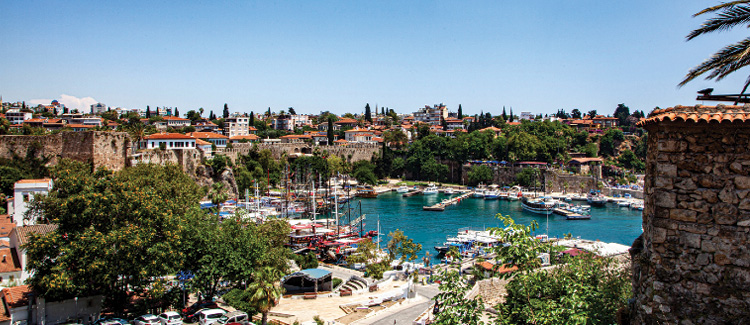 Old Town Kaleiçi
Old Town Kaleiçi
The maze-like Kaleiçi neighborhood was made for strolling. Perfectly restored whitewashed and red-roofed Ottoman mansions line the cobblestone streets, now home to a plethora of boutique hotels, souvenir shops, art galleries, and restaurants. Although it’s more a place to simply breathe in the old-world ambience, there are also plenty of small tourist attractions for those who want to sightsee. The main square (Kale Kapısı) has a fortress gate and stone-clad clock tower, while the 18th-century Tekeli Mehmet Paşa Mosque is worth a look just for its stunning interior tile work. Along Hesapçı Sokak, you’ll find the graceful Kesik Minare (truncated minaret). Destroyed by fire in the 19th century, this is all that is left of a building that started its life as a Roman temple, was converted into a Byzantine church, and finally became a mosque.
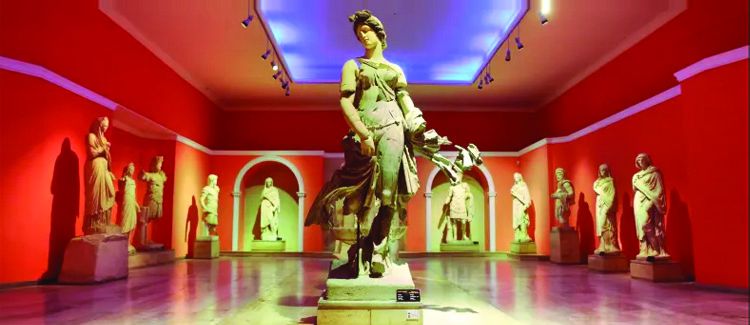 Antalya Museum
Antalya Museum
If you’re at all interested in Turkish history don’t miss this excellent museum. The dazzling exhibits here showcase all the best finds from excavation sites across the Turkish coast. Even better, the collection is displayed in exemplary fashion, making Türkiye’s rich (and rather complicated) history easy to understand. The large archaeological section offers displays from the Bronze Age to Byzantium, with a particular emphasis on ruins in the nearby area. If you’re short on time make a beeline for the galleries containing the mosaics from Seleukeia, silver hoard display from Aspendos, and divinity statues from Perge.
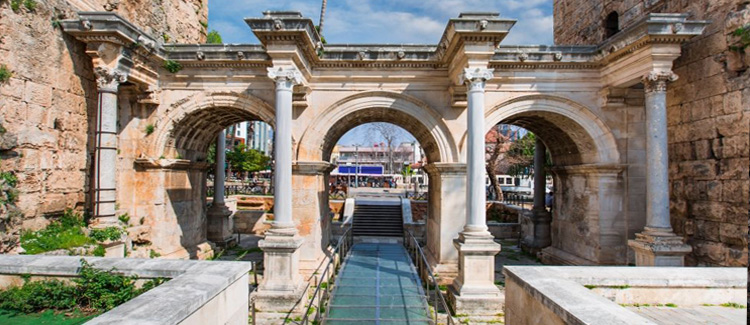 Hadrian’s Gate
Hadrian’s Gate
Hadrian’s Gate is one of the main (and the most dramatic) entrance gates into the Kaleiçi district. Considerable stretches of the Hellenistic and Roman town walls on the eastern side of the old town have been preserved, and Hadrian’s Gate is the most notable of these sections. Erected in honor of the AD 130 visit by Emperor Hadrian himself, this imposing three-arched marble gateway, flanked by imposing towers, is decorated with rich sculptural decorations. As you walk through the arches look up at the ceiling to view the best preserved carvings.
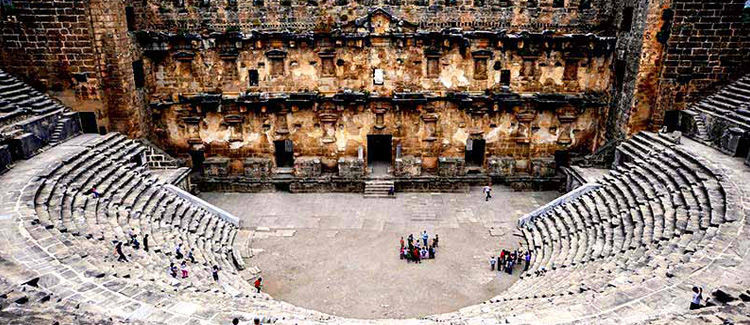 Aspendos
Aspendos
The main reason history-buffs visit Antalya is to make the day trip to Aspendos. This archaeological site is home to a Roman theater commonly thought to be the best preserved in the world and one of the top tourist attractions in Türkiye. The glory days of this dazzling, ancient town were during the 2nd and 3rd centuries, when most of the ruins that can be seen today were built. Apart from the theater, which has been fully restored and can seat 15,000 people, much of the rest of the site still lies in ruins and is probably only interesting to the most enthusiastic sightseer.
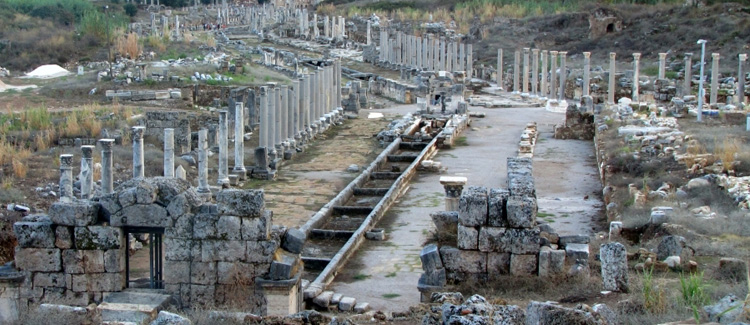 Perge
Perge
Perge’s vast and rubble-filled stadium, half-destroyed temples, and huge colonnaded agora are imbued with an atmosphere of past glory. This was once the capital of ancient Pamphylia, which blossomed under first Greek and then Roman rule. The ruins here are not as well-preserved as others on Türkiye’s Turquoise Coast, but this also means they attract fewer crowds, leaving visitors able to explore the long colonnaded streets and half-collapsed temples in peace. The Roman baths, Hellenistic Gate, and Acropolis are all particularly interesting.
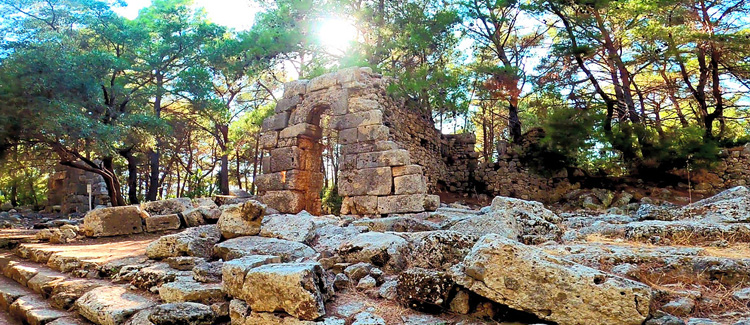 Phaselis
Phaselis
The old Lycian port of Phaselis is where Alexander the Great set up his winter quarters in 334 BC. There are remains of a theater, aqueduct, temples, a colonnaded street, and a Hadrian’s Arch Gate erected in AD 114. The seaside location of the ruins is very pretty. A museum on site displays excavated finds. If you have time, a couple of kilometers before Phaselis is the Olympos Teleferik (cable car), which journeys up the side of Tahtali Mountain to the summit at 2,275 meters for panoramic vistas over the coast.
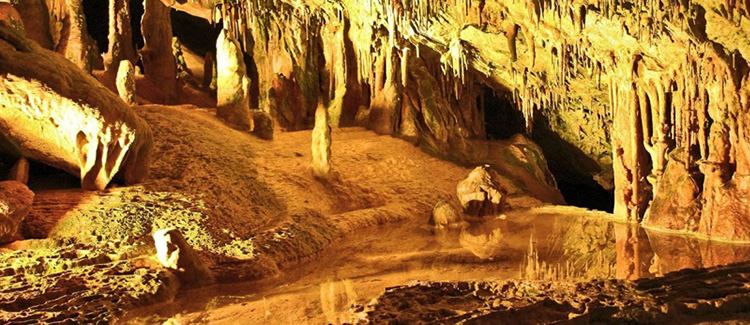 Karain Cave
Karain Cave
The Karain Cave, near Dösemaltı, was inhabited by prehistoric man and has yielded finds from both the Lower and Middle Palaeolithic eras. Excavated finds here include bones and teeth belonging to Neolithic man. Some of the finds are on show in the small but remarkably comprehensive museum on site. The wide, arching caverns here are a good opportunity for some easy caving and are very popular with local families having a break from the city. If you can, try to come on a weekday when they’re less busy. If you have a hire car, the cave and museum combined with the karst springs a little further north make a good day trip.

